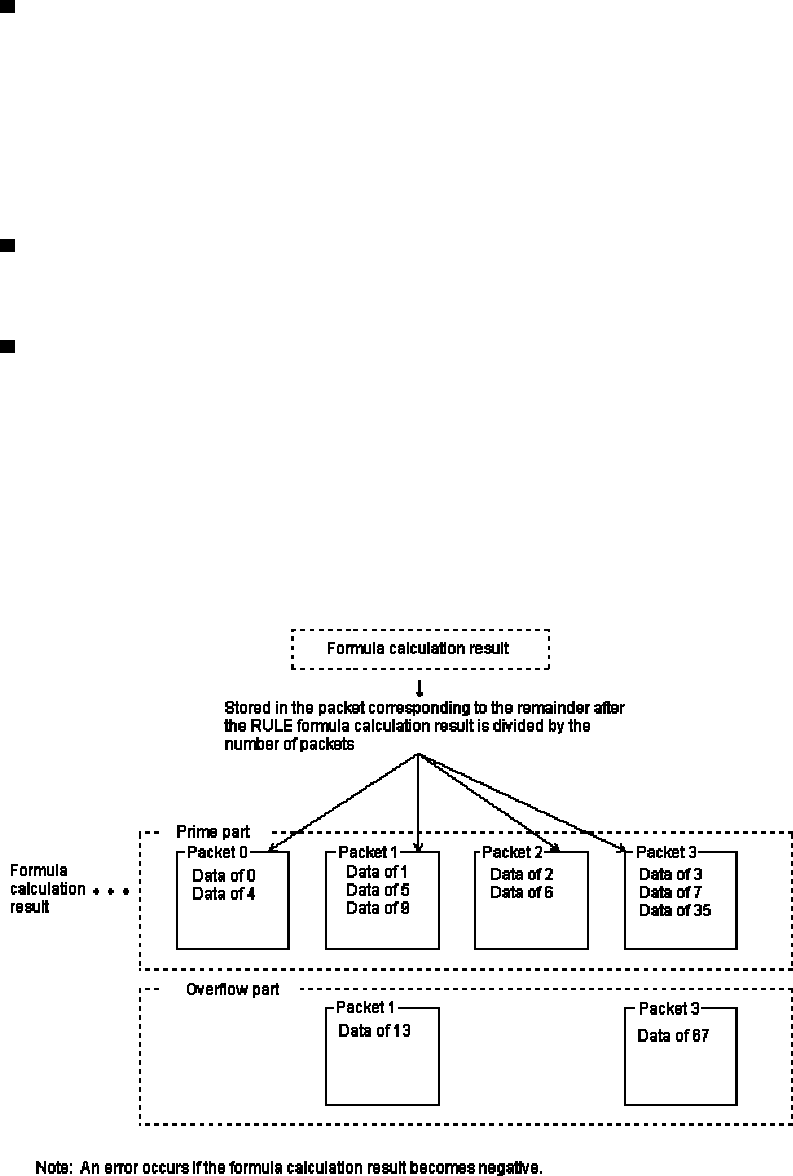
cases, the entire cluster key is not specified in the data processing.
RANDOM structure page size specification
In a RANDOM structure, a prime part bucket is associated with a single page. An overflow part bucket is also
independently associated with a single page. The size of each of these pages can be independently specified. The
prime part page size is specified by the PAGESIZE1 option of the DSO definition. The overflow part page size is
specified by the PAGESIZE2 option.
When specifying the page size, carefully consider the following points:
· Data corresponding to a single row of the table must fit in one page.
· When setting the prime part page size, carefully consider the average I-O frequency (which depends on the
number of data entries within the page).
When an index must be added to a RANDOM structure
The user must add an index for a column of the corresponding table that has a unique constraint but is not specified
as the cluster key. If no index is added for such a column, the table cannot be accessed.
RANDOM structure data storage position specification
A rule of determining a data storage packet can be specified by setting RULE to the storage option of the table DSO
definition statement. When specifying RULE, note the following:
· A RULE formula resulting in a negative value cannot be specified.
· A RULE formula should be designed by considering the cluster key value to be stored in the table and the
database I/O count and storage efficiency from the point of view of work.
A data-storing packet is determined from the remainder of dividing the RULE formula calculation result by the number
of packets. Figure: Overview of data storage method shows an outline of the data storage method.
[Figure: Overview of data storage method]
The example below shows the table DSO definition when RULE is specified.
Example:
When cluster keys are generated in ascending order, this definition enhances the storage efficiency
143


















